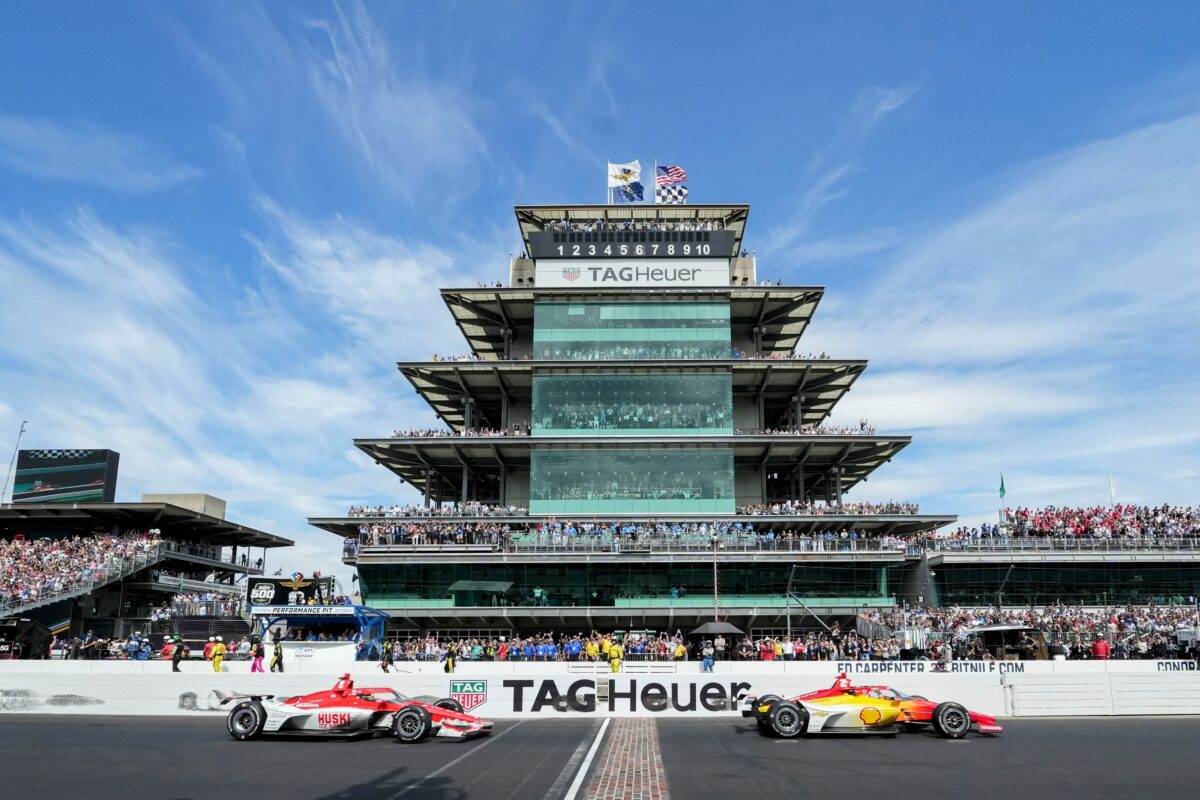This story was originally published in 2019. It has been updated for the 2024 Indy 500.
There are more than 100 years of racing history at Indianapolis Motor Speedway, the iconic 2.5-mile track that will host the 108th running of the Indianapolis 500 on Sunday (pre-race coverage begins on NBC and Peacock at 11 a.m. ET but the green flag is set for 12:45 p.m. ET). So obviously, there’s a lot to learn about the track, the race and the drivers.
The historic track is commonly referred to as the Brickyard — a term that even made its way into the name of the NASCAR Cup Series’ previous race there each season. But why? Let us break it down…
[lawrence-related id=1901923]
Why is Indianapolis Motor Speedway called the Brickyard?
The simple answer is because it is literally a yard of bricks. At one time, more than a century ago, the whole track used to be paved with bricks, but to know how that happened, we actually have to go farther back in IMS track history.
The original surface of the track when the speedway first opened in August of 1909 was created from “a sticky amalgam of gravel, limestone, tar, and 220,000 gallons of asphaltum oil”, according to History.com. But this actually turned out to be a dangerously fatal disaster at the very first car race. Five people died as a result of the chaos produced from the rough yet slippery surface, and “‘flying gravel shattered goggles and bloodied cheeks'”.
So the track owner, Carl Fisher, repaved it with bricks. More from the track’s website:
In a span of 63 days in fall 1909, 3.2 million paving bricks, each weighing 9.5 pounds, were laid on top of the original surface of crushed rock and tar to upgrade the Speedway.

When were the Indianapolis Motor Speedway bricks repaved?
Gradually in the first few decades of the track’s existence, asphalt was added to different pieces of the surface, and rougher sections of the turns were covered in 1936. Eventually, all four turns were fully paved with asphalt in 1937. More from Indianapolis Motor Speedway:
In 1938, the entire track was paved with asphalt except for the middle portion of the front straightaway.
In October 1961, the remaining bricks on the front straightaway were covered with asphalt. A 36-inch strip of the original bricks was kept intact at the start/finish line, where it remains today as the fabled Yard of Bricks.
The bricks are still there today and actually continue past the literal track and into the infield. They’re part of every celebratory moment.
Why do drivers kiss the Yard of Bricks when they win the Indy 500?
There are so many elements of the track’s and Indy 500 history that come down to tradition. And you won’t see an Indy 500 winner (or NASCAR race winner) walk away without kissing the bricks.

Drivers and their teams will line up along the Yard of Bricks to take their own always spectacular photos. But it wasn’t always that way, and this is a newer tradition compared with the whole history of the track. From IMS’ website:
The tradition of “kissing the bricks” was started by NASCAR champion Dale Jarrett. After his Brickyard 400 victory in 1996, Jarrett and crew chief Todd Parrott decided to walk out to the start-finish line, kneel and kiss the Yard of Bricks to pay tribute to the fabled history of the Indianapolis Motor Speedway.
The team joined them for a group kiss on the bricks, and an Indianapolis tradition was born that Indianapolis 500 and Brickyard 400 winners have followed since.
And one of 33 drivers Sunday will continue the Brickyard tradition of kissing the bricks.
Cars weren’t on track today, but that doesn’t mean you can’t be.
Take a drone ride around @IMS via our friends at @IndyCaronNBC!#ThisIsMay | #Indy500 pic.twitter.com/GC5EpF7l03
— Indianapolis Motor Speedway (@IMS) May 21, 2019
[listicle id=1897851]
[lawrence-auto-related count=3 tag=1168941]
